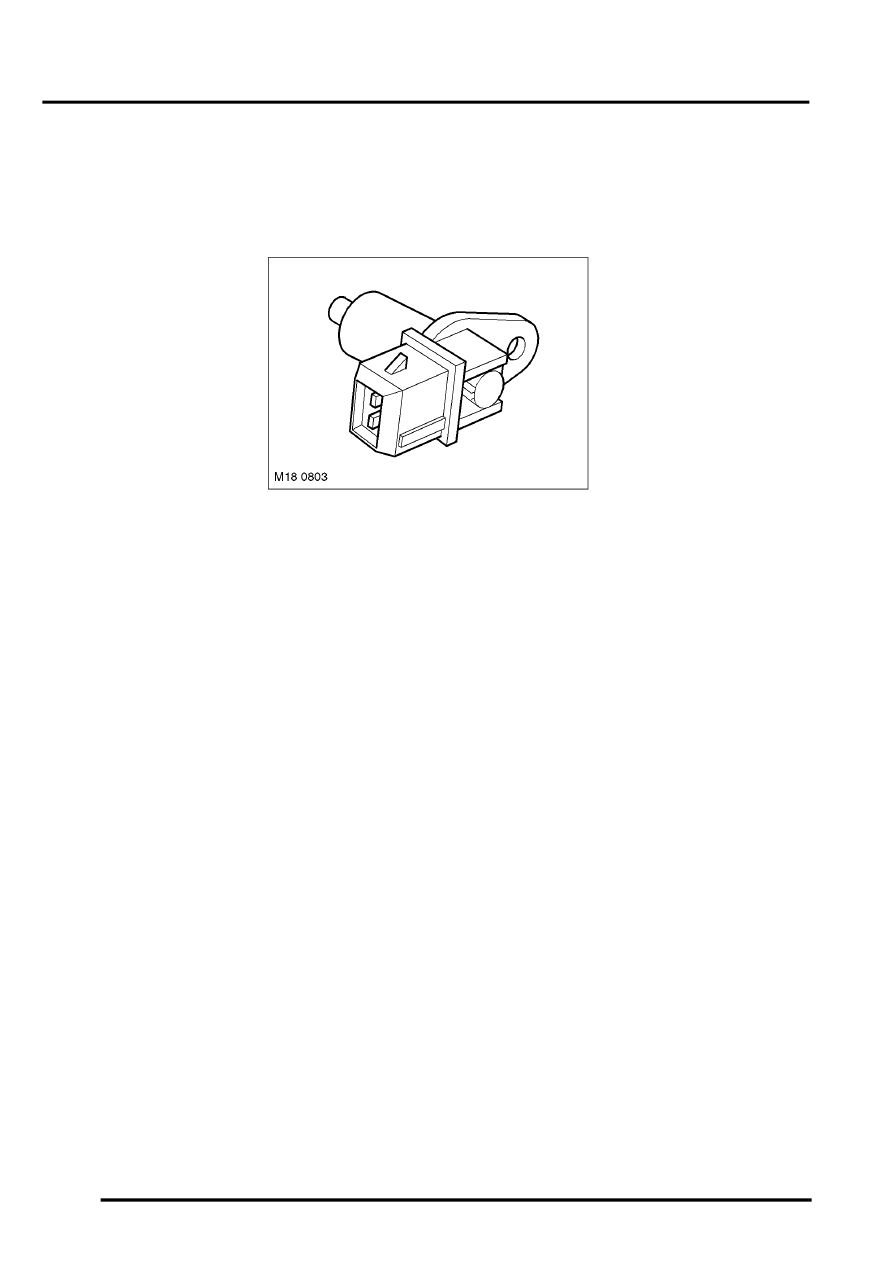L322 Range Rover System Description and Operation

ENGINE MANAGEMENT SYSTEM – V8
18-2-20 DESCRIPTION AND OPERATION
Crankshaft Position (CKP) Sensor
The CKP sensor is located in the lower right side of the transmission bell housing, in line with the engine flywheel.
The sensor reacts to a reluctor ring to ascertain engine speed and position information. The sensor has three wires
attached to it; two signal wires and a sensor earth screen. The sensor earth screen is connected to chassis earth
through the ECM.
CKP Sensor
The CKP sensor is an inductive type sensor which produces a sinusoidal output voltage signal. This voltage is induced
by the proximity of the moving reluctor ring, which excites the magnetic flux around the tip of the sensor when each
tooth passes. This output voltage will increase in magnitude and frequency as the engine speed rises and the speed
at which the teeth on the reluctor ring pass the sensor increases. The signal voltage will peak at approximately 6.5
volts if connected to the ECM (further increases in engine speed will not result in greater magnitude). The ECM neither
specifically monitors nor reacts to the output voltage (unless it is very small or very large), instead it measures the
time intervals between each pulse (i.e. signal frequency). The signal is determined by the number of teeth passing
the sensor, and the speed at which they pass. The reluctor ring has 58 teeth spaced at 6
°
intervals, with two teeth
missing to give the ECM a synchronisation point.
The signal produced by the CKP sensor is critical to engine running. There is no back-up strategy for this sensor and
failure of the signal will result in the engine stalling and/or failing to start. If the sensor fails when the engine is running,
then the engine will stall, a fault code will be stored and details captured of the battery voltage, engine coolant
temperature and intake air temperature at the time of the failure. If the signal fails when the engine is cranking, then
the engine will not start and no fault will be stored, as the ECM will not detect that an attempt had been made to start
the engine. In both cases the tachometer will also cease to function immediately and the MIL lamp will be permanently
illuminated.
During the power-down procedure, which occurs when the ignition is switched off, the ECM stores details of the
position of the CKP and CMP sensors. This enables the ECM to operate the injectors in the correct sequence
immediately the engine cranks, to produce a quick engine start, which serves to reduce emissions when the engine
is cold.
